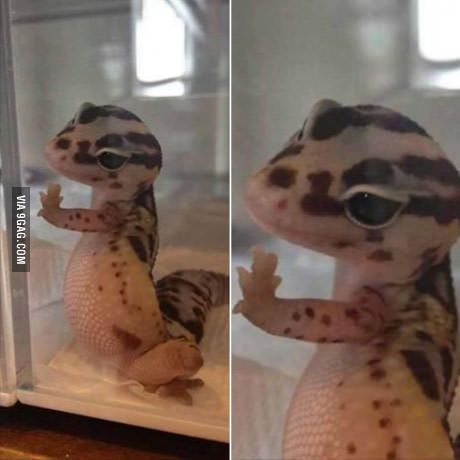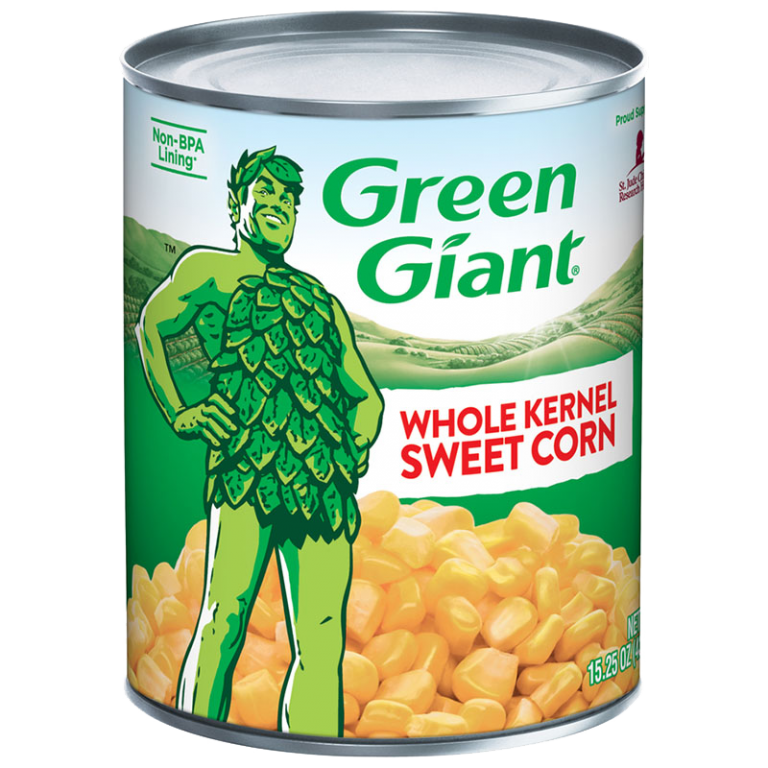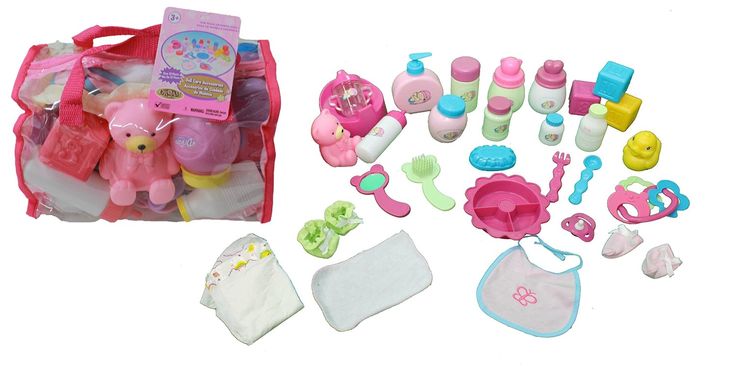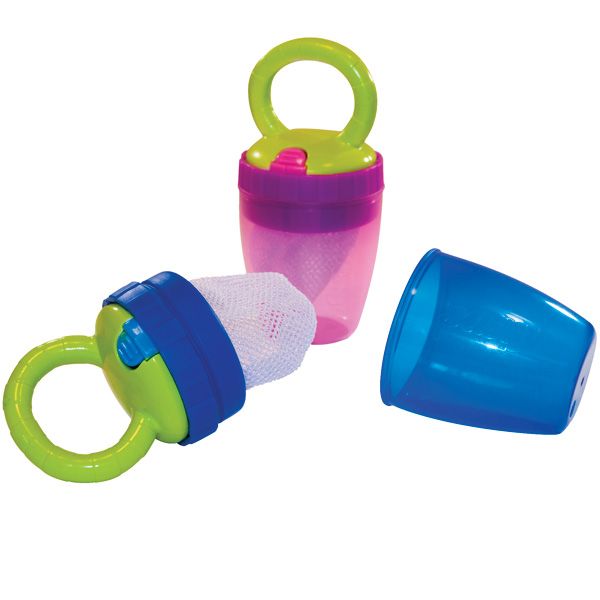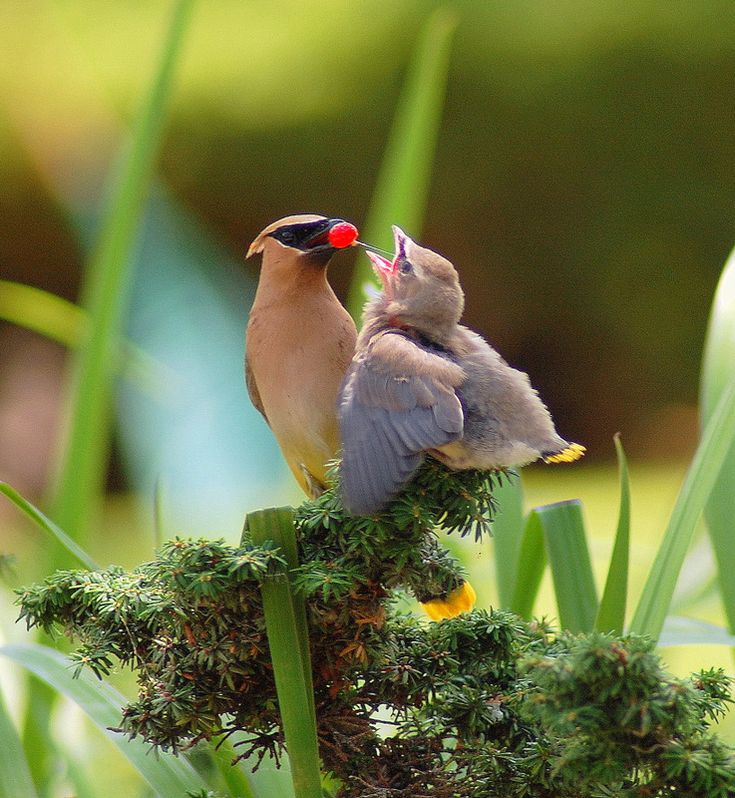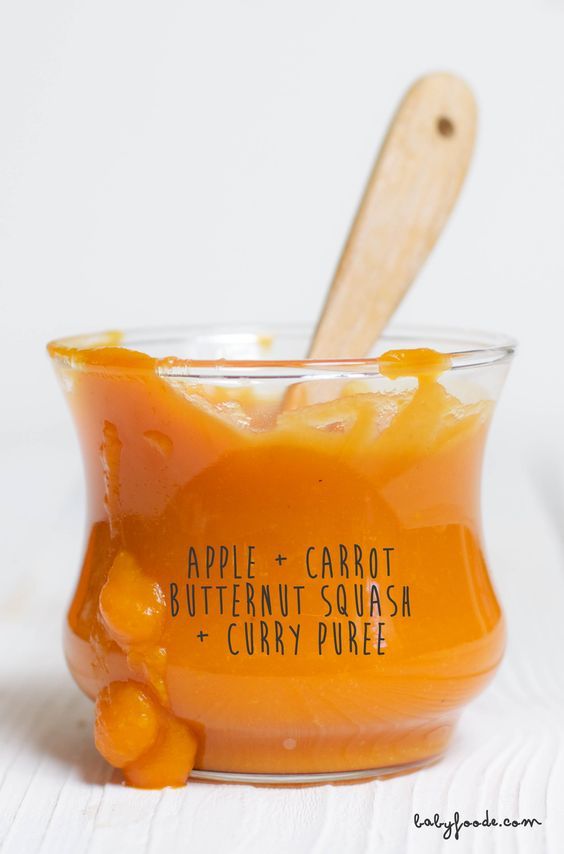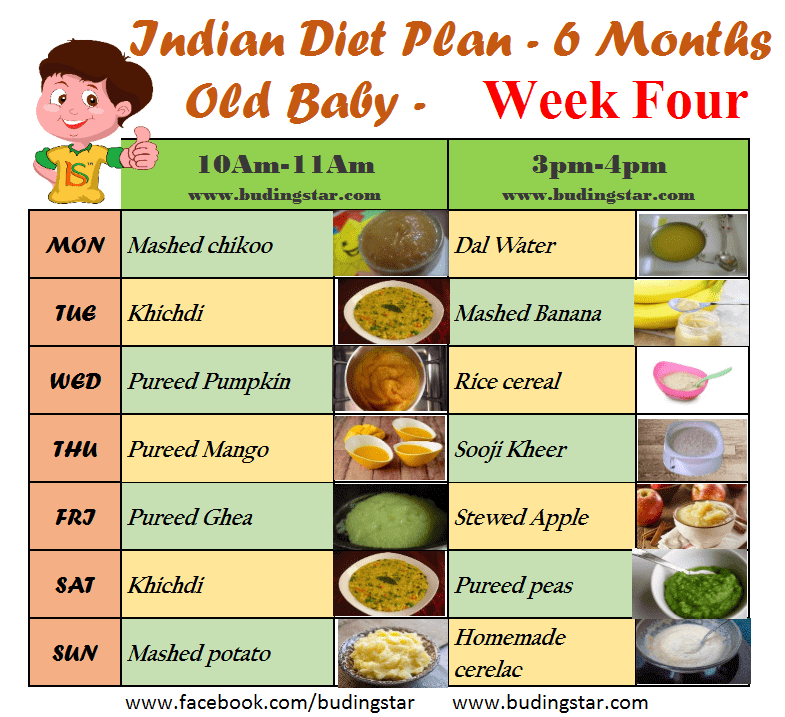Baby leopard gecko feeding schedule
Leopard Gecko Feeding Schedule (With Table Guide)
A nutritious and varied diet plays a massive role in the life of a leopard gecko.
Not only does a proper diet go a long way to keeping your gecko healthy, but it is also a great way to add enrichment to your pet’s life.
Hand-feeding your leopard gecko gives you a chance to bond with your pet, and let them chase after crickets allow them to use their hunting instincts.
While it all sounds very exciting for your pet, feeding time may seem very confusing for new leopard gecko owners.
Most of this confusion is centered around their leopard gecko’s feeding schedule.
As a general rule, baby leopard geckos will need to be fed every day, while juveniles from 6-12 months old should be fed every other day. Adult leopard geckos have a more relaxed feeding schedule, as they only need to eat every 3-4 days.
However, feeding a leopard gecko goes beyond just knowing how often to feed them.
A responsible leopard gecko owner should also be educated about when and how to feed their reptiles.
Read on for more information on the best time of day to feed your leopard gecko, which insects are the healthiest, and the supplements you should be adding to every meal.
Table of Contents
The Best Time Of Day To Feed Your Leopard GeckoUnlike diurnal species, which are more active during the day, leopard geckos are crepuscular reptiles.
This means they are the most active between dusk and dawn, usually when they hunt.
To coincide with a leopard gecko’s instincts, it is best to feed them in the evenings, usually between 7-9 pm.
This is when a leopard gecko is most active after it has spent the day sleeping and relaxing.
Feeding a leo at any other time will likely disrupt its usual sleep cycle.
Too many sleep disruptions will cause serious health problems for your leopard gecko.
It is best to establish a feeding routine for your gecko and stick to feeding it at close to the same time for every feeding.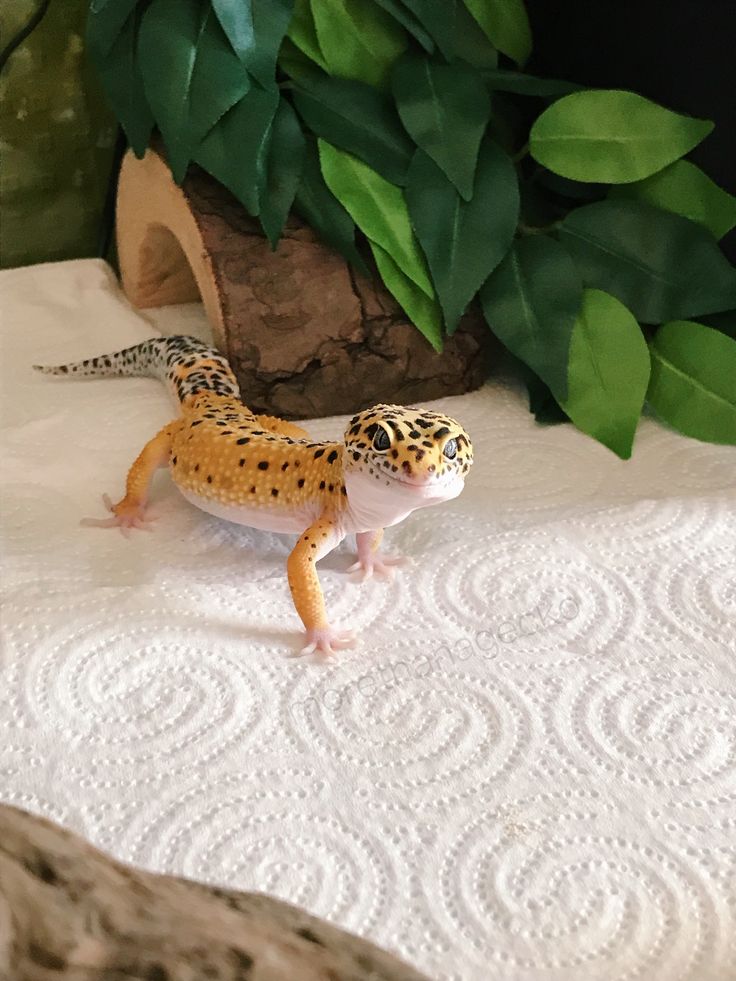
How often you feed your leopard gecko entirely depends on its age.
Baby geckos grow very quickly, and they need to be fed more often than adults to establish healthy growth.
Juvenile leopard geckos between the ages of 6-12 months grow less rapidly than babies.
Since they are still in the developing stages, they will need to be fed more often than adults but less frequently than the babies.
Once a leopard gecko reaches the adult stage of life, they are no longer growing, but instead, they are eating to maintain a proper weight and good health.
Because of this, you should feed an adult leopard gecko every 3-4 days.
The following table provides a handy reference for how often to feed a leopard gecko at every life stage.
| Leopard Gecko Age | Frequency of Feeding |
|---|---|
| Baby (0-6 months) | Every day |
| Juvenile (6-12 months) | Every other day |
| Adult (12 months +) | Every 3-4 days |
Leopard geckos are insectivores, which means their diet is made up entirely of insects.
It is essential to feed your gecko a variety of insects.
This is not only important for their health, but it also keeps your leopard gecko from becoming a picky eater.
As a rule of thumb, the size of insect feeders should never be larger than the space between a leo’s eyes.
If you want more options than these, check out this list of leopard gecko food alternatives.
Staple InsectsStaple insects are the ones you will feed to your leopard gecko at every meal.
Offer your gecko a variety by rotating these insects throughout the week.
Staple insects are low in fat and are a good source of protein.
They include:
- Crickets
- Dubia roaches
- Phoenix worms
- Silkworms
- Hornworms
If you feed your leopard gecko hornworms, they should be captive-bred only.
Wild hornworms are toxic, so do not take one from your garden and feed it to your gecko.
Insects as TreatsThese insects are generally very high in fat and offer very little nutritional content.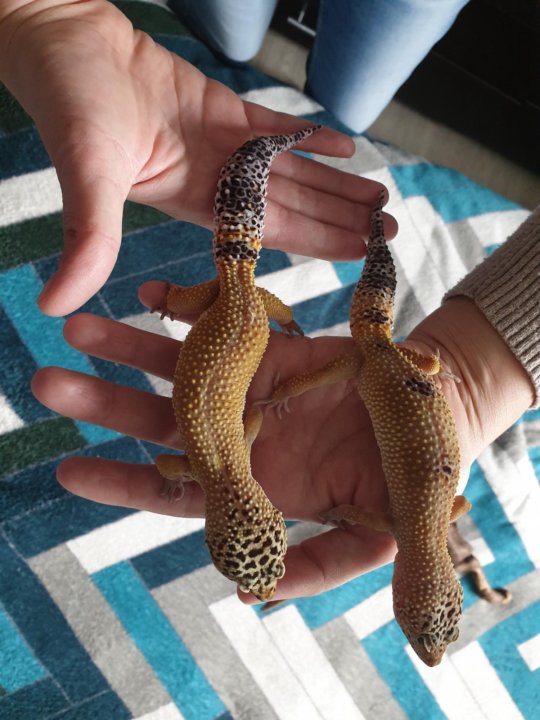
They should only be fed as a treat once per week at most.
In addition to their high-fat content, leopard geckos find these types of insects to be very delicious.
If your leopard gecko is fed too many of these insects, it might reject more nutritious foods.
Types of “treat” insects include:
- Wax worms
- Super worms
- Mealworms
Many leopard gecko owners mistake mealworms for a staple insect.
However, in addition to their slightly higher fat content, mealworms have tough exoskeletons, making digesting them difficult for most reptiles.
It is safer to only offer your leo a mealworm or two as a treat once a week.
The chart below compares common feeder insects’ fat and protein content and gives you guidelines on how often to feed them to your leo.
| Insect | Fat | Protein | How Often to Feed |
|---|---|---|---|
| Crickets | 6% | 21% | Staple insect, offer regularly |
| Dubia Roaches | 7% | 23% | Staple insect, offer regularly |
| Phoenix Worms | 9% | 17% | Staple insect, offer regularly |
| Silkworms | 1% | 9% | Staple insect, offer regularly |
| Hornworms | 2% | 10% | Staple insect, offer regularly |
| Wax worms | 22% | 15% | 1 insect, once per week as a treat |
| Super worms | 18% | 17% | 1 insect, once per week as a treat |
| Mealworms | 12% | 20% | 1-3 insects, once per week as a treat |
Fireflies, lightning bugs, and other glowing insects are toxic and should never be fed to your leopard gecko.
Wild hornworms are also toxic.
You should also avoid feeding your leopard gecko any wild-caught insects, as most of them are infested with dangerous parasites.
Parasites will make your leopard gecko very ill and even cause death if left untreated.
In addition to avoiding these potentially dangerous insects, you should never feed your leo cat food, dog food, or table scraps.
Gut Loading Feeder InsectsNo matter which insects you choose to feed your leopard gecko, they should all be gut loaded before mealtime.
Gut loading is the process of feeding live insects a very nutritious diet of vegetables and greens.
Nutritious foods made just for feeder insects are also commercially available.
The feeder insects will then pass these nutrients to your leo when they are digested.
You should feed insects to your gecko within 24 hours of gut loading.
Otherwise, the insects might completely digest their food and defecate, leaving them empty and offering little nutritional value other than protein.
You should offer fresh, clean water to your leopard gecko at all times.
Leopard geckos may also soak in their water dish, so you will need to watch the water quality and change it when it becomes dirty.
A shallow, heavy water dish is the best option because the weight of the dish avoids spills, and it should be shallow enough to keep your leo from drowning.
Avoid distilled or softened water, and instead, use tap or spring water.
Tap water and spring water contain vital minerals, which are good for your leo’s health.
How Often To Add SupplementsIt is crucial to add calcium and multivitamin supplements to your leopard gecko’s diet to prevent health issues.
Even though a varied insect diet is healthy for your leo, these insects often lack essential nutrients such as calcium, vitamin D3, and vitamin A.
Without enough calcium in its diet, a leopard gecko will develop a crippling illness known as metabolic bone disease.
When a gecko has a calcium deficiency, its body will leach calcium from the bones.
This leads to bone softening and deformities and paralysis, lethargy, and uncontrollable shaking.
The metabolic bone disease does not have a cure, and it is often fatal.
Vitamin D3 is important because it helps a leopard gecko’s body metabolize and process calcium properly.
Many calcium supplements include D3, which eliminates the need for a separate D3 supplement.
UVB lighting also allows a leopard gecko to synthesize D3 from UV rays.
Vitamin A is also essential for your leo’s diet because it prevents eye problems and aids in shedding and breeding.
And check out our post on leopard gecko eye infections and other problems to learn more about potential eye issues.
Too Much Vitamin A May Also Be A Bad Thing
However, the problem with vitamin A in reptiles is how it builds up in the body.
Too much vitamin A will cause an overdose and lead to numerous health problems.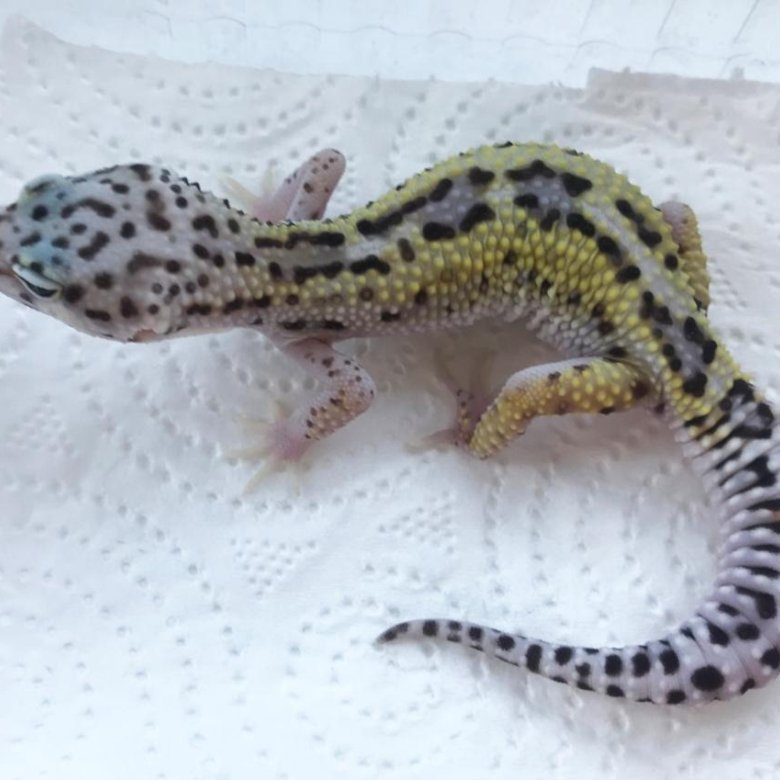
When choosing a multivitamin supplement, read the label to ensure it includes beta carotene instead of vitamin A.
Leopard geckos can synthesize beta carotene into vitamin A, and their bodies will only synthesize as much vitamin A as they need.
This prevents excess vitamin A from accumulating in the body and causing health issues.
Calcium and multivitamin supplements come in powder form, and they should be given to your leo by lightly dusting its feeder insects right before mealtime.
Avoid caking the supplements on, as this reduces the palatability of the insects, and your leo may not eat them.
To dust feeder insects, you will need a plastic container with a lid.
Add a small amount of the supplement powder to the container, and then add the insects.
Cover with a lid and shake gently to coat the insects.
An important thing to remember is not to mix your supplement powders.
In other words, do not offer your leo calcium on the same day as a vitamin powder.
The following table shows how many supplements should be given to baby, juvenile, and adult leopard geckos.
Since baby and juvenile geckos are fed more frequently, they should be given supplements more often than adults.
| Leopard Gecko’s Age | Calcium Supplement | Multivitamin Supplement |
|---|---|---|
| Baby (0-6 months) | 5 days per week | 2 days per week |
| Juvenile (6-12 months) | 2-3 days per week | 1 day per week |
| Adult (12 months +) | 6-8 days per month | 2-3 days per month |
There are two schools of thought regarding how much to feed your leopard gecko.
Some leopard gecko owners go by the rule of 2 insects for every inch of body length.
Other leopard gecko keepers place several insects in the enclosure and allow their leopard gecko to eat as much as they want within 15 minutes.
After 15 minutes, the remaining insects are removed from the enclosure.
This step is crucial, as some insects (especially crickets) will nibble at your leo, causing injury.
Since crickets are excellent at hiding, be sure to remove all of the remaining ones in the tank.
To make feeding time more manageable, you may want to consider feeding your leo in a separate smaller enclosure.
This feeding tank should have a simple substrate, such as paper towels or newspaper, and nothing else.
This gives the insects nowhere to hide, making cleaning up after mealtime much easier.
Either of these feeding methods is perfectly fine for your leopard gecko.
To avoid excessive weight gain, you should regularly weigh your leo using a small kitchen scale.
This will let you know if your gecko is overeating or gaining weight too quickly.
Never put your leopard gecko on a diet without consulting a veterinarian first.
Aside from ensuring your female leopard gecko is not gaining weight due to pregnancy, a veterinarian will be able to evaluate your pet’s weight and recommend a safe diet plan.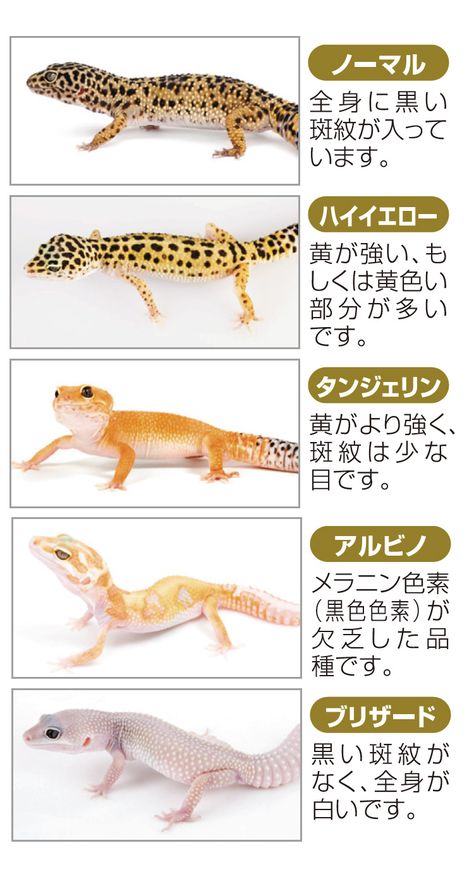
If your leo needs to go on a diet, it should be done gradually to avoid possible nutritional deficiencies from under-feeding.
Feeding Supplies For Leopard GeckosWhether you decide to feed your leo by hand or use a food dish, there are some basic supplies you will need to make mealtime easier for both you and your gecko.
Water DishYou should always provide your gecko with fresh, clean water.
To do this, you will need to place a heavy, spill-proof shallow bowl in the enclosure.
Ceramic bowls are naturally heavy and easy to clean.
Since leopard geckos often like to soak in their water bowl, the bowl needs to be shallow enough to keep your leo from drowning.
You may also need to clean the bowl and refill it with fresh water several times a day because it will get dirty quickly due to your leo’s soaking habits.
Calcium BowlBecause leopard geckos need plenty of calcium, some owners choose to make calcium available to their reptiles at all times by providing calcium powder in a shallow dish.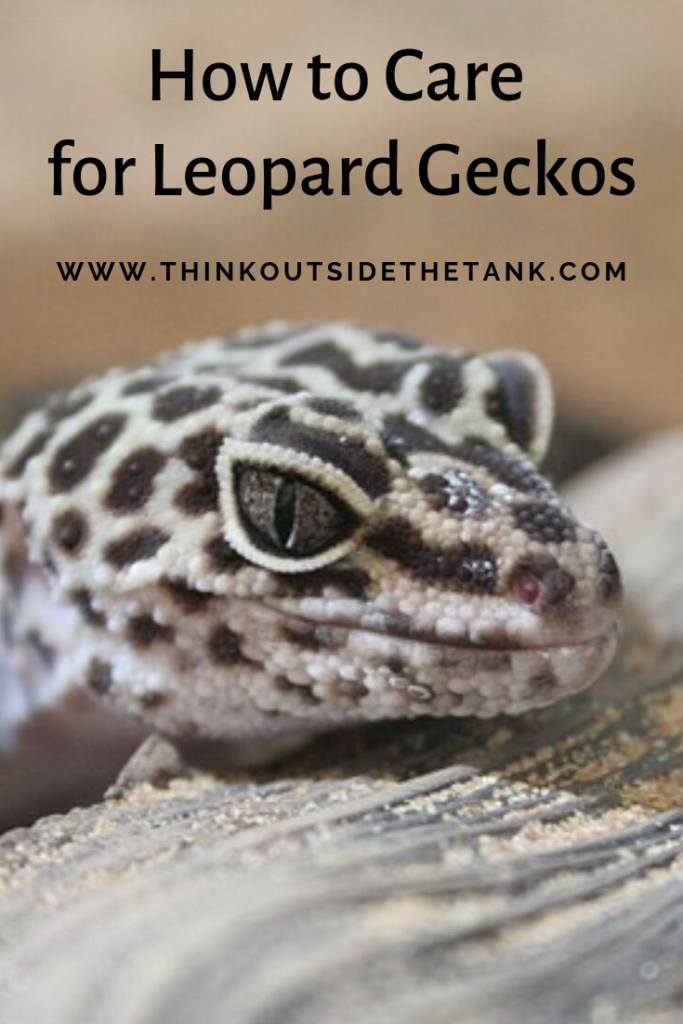
However, doing this poses a risk for calcium overdose if your leo licks it too much.
Since juvenile leos need more calcium than adults, this may only benefit a younger gecko.
It is also difficult to gauge how much calcium your leo is getting every day.
Some geckos do not like the taste and will not take calcium from a dish at all.
Dusting feeder insects with calcium powder is often a more reliable supplementation method.
If you decide to use a calcium dish, you should only use a calcium powder formulated without vitamin D3 to prevent an overdose of the vitamin.
Food DishThere are many different types of food dishes available for reptiles.
These bowls are often deep and have smooth sides to prevent insects from escaping.
These feeding dishes work exceptionally well for feeding worms and some types of roaches because these insects cannot escape.
A food bowl is less useful when feeding crickets because these insects can escape any dish quite easily.
As previously stated, you may find it helpful to use a separate enclosure for mealtimes to prevent stray insects from hiding and wreaking havoc in the main enclosure.
Feeding TongsYou may hand-feed your gecko using your fingers, but feeding tongs make this task much easier.
These special feeding tongs feature a soft rubber tip to avoid any potential injury to your leopard gecko.
Feeding your leo by hand is a great way to bond with your pet, and many owners use this method, sometimes in combination with using a food dish.
Feeding Tongs 15" 2 Pcs Super Thick Stainless Steel Forceps Curved and Straight
Check Price on Amazon
Deals on Chewy
We earn a commission if you click this link and make a purchase at no additional cost to you.
Leopard Gecko Diet - Best Food, Sizes, Feeding Schedules
In this post, you will be able to learn everything you need to know about your leopard gecko’s diet. We will discuss what to feed leopard geckos, how much water and food they need, suitable insect sizes, food and water bowl selection and so on. We will also talk about hatchling, juvenile and adult leopard gecko feeding schedules.
We will discuss what to feed leopard geckos, how much water and food they need, suitable insect sizes, food and water bowl selection and so on. We will also talk about hatchling, juvenile and adult leopard gecko feeding schedules.
Leopard geckos are carnivores, which means that they need to eat insects and small animals to survive. You can feed your leopard gecko insects and animals such as beetles, flies, grasshoppers, spiders, mealworms, crickets, small locusts, waxworms, silkworms, snails, some types of cockroaches, and that’s what they eat in the wild.
In the wild, they also consume other insects that they can kill of find dead. Leopard geckos will also kill and eat other lizards that are small than them.
The main source of energy for your leopard gecko is protein and fat. Fat is also crucial for female leopard geckos, as it is stored in her eggs. Vitamins and fiber are also important for your leopard gecko’s well being.
Leopard geckos don’t eat anything besides insects. Leopard geckos do not eat vegetables, like lettuce or carrots, or any fruits or flowers. You will need to get live or freeze dried insects (only occasionally) for your leopard gecko.
Leopard geckos do not eat vegetables, like lettuce or carrots, or any fruits or flowers. You will need to get live or freeze dried insects (only occasionally) for your leopard gecko.
While some leopard gecko owners might claim that their leopard gecko eats lettuce or bananas, it still doesn’t mean this food is suitable. Fruits and vegetables are not suitable for leopard geckos and will not provide your gecko with enough energy.
You can raise your leopard gecko successfully on both live insect and occasional preserved insect diet. Of course, feeding your leopard gecko live food will make it active, increase its attention and encourage it to hunt. Your leopard gecko will be more engaged and happy if you feed it live foods more often.
Live food should be prioritized, so try to offer live food at least every other day. But if you start training your leopard gecko to eat preserved foods from the early age, it will be fine will only occasional live food.
If you introduce freeze dried insects when your gecko is an adult, it can refuse to it them. You will have to artificially wiggle the food to engage your leopard gecko to eat.
But of course, feeding live foods to your leopard gecko might not be always possible. If you are feeding freeze dried insects, you will probably need to move them with feeding tongs like this to activate a feeding reaction in your gecko.
The main rule to follow if you are choosing dried insects is to dust them with calcium and other supplements, and most of them will be already gut-loaded. Read a full guide on live insect gut-loading here.
For your leopard gecko, choose a water and food bowls that are shallow. Otherwise, your gecko might have a problem reaching water and food. Misting and spraying your leopard gecko will also provide it with some source of drinking water.
Leopard gecko’s vivarium will benefit from four bowls – one can be shallow with dried insects such as crickets, and the other one – high-sided for moving live insects such as mealworms and roaches.
This will stop them from escaping and causing any infestation or cross-contamination. The third will be a water dish and the fourth one will be for a pure calcium source (such as grated cuttlebone). Make sure water is always available in leopard gecko’s vivarium.
Some examples of food and water bowls:
Exo Terra feeding dish
Exo Terra water dish with small steps to prevent drowning
Worm dish to prevent live worms from escaping
To feed your gecko, offer them the insects coated with calcium supplements in the small plastic feeding dish.
Only offer gut-loaded + powdered crickets and other insects. If the insects have not been gut-loaded and dusted, they will have little or no nutritional value and your leopard gecko will develop deficiencies.
Make sure the dish is tall enough so that mealworms can’t escape. If the insects escape, make sure to catch them and powder them again.
To fatten up adult (only) geckos and to add some variety, offer leopard geckos waxworms, king mealworms, locusts, silkworms and other types of insects one to two times a week.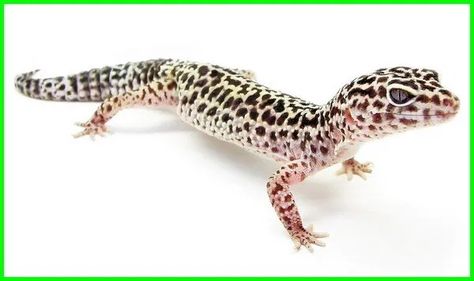
The best time of a day to feed your leopard gecko is the in the evening, when they naturally start hunting. Feed hatchling and baby leopard geckos (up to 4 months old) every day – they will eat around 4-8 crickets or 1-3 worms per feeding.
With juvenile leopard geckos, feed them 5-6 days a week with larger crickets and worms. Feeding schedules for adult leopard geckos (18 months and over) will be different – you will need to feed them only 2-3 times a week.
Adults will handle around 6-10 larger crickets per feeding. Leopard geckos can go around one week without food – but make sure to feed them more food before leaving for a trip or holiday.
Make sure to gut-load the insects with every feeding (except for Phoenix worms). Supplementation frequencies will differ, and multivitamins should be used less often. We talk about gut-loading and supplements in this post.
Variety in leopard gecko’s diet is very important – otherwise they get bored with food! Try mixing/alternating to different insects with each or every other feeding.
A hatchling leopard gecko won’t eat anything for around 3-4 days and will feed on the yolk sac supply.
To feed your leopard gecko, time 15 minutes on your clock and offer as many insects as it can eat. Use feeding tongs or put insects in a dish and keep adding more as your leopard gecko is eating.
Don’t place too many straight away – especially live crickets can run away and hide, and it will be hard to find them afterwards. Crickets that hide will get hungry and start biting on your leopard gecko.
After 20 minutes, remove all uneaten insects.
If your leopard gecko is a picky eater, try to mix the insects that it doesn’t like too much with some others. Alternatively, try buying other insects and seeing if it likes to eat them. Make sure the insects that you are choosing for everyday feeding are not too fatty. Always alternate the insects that you are offering.
You need to make fresh water available at all times in gecko’s vivarium. Choose a shallow plastic dish a fill it with water.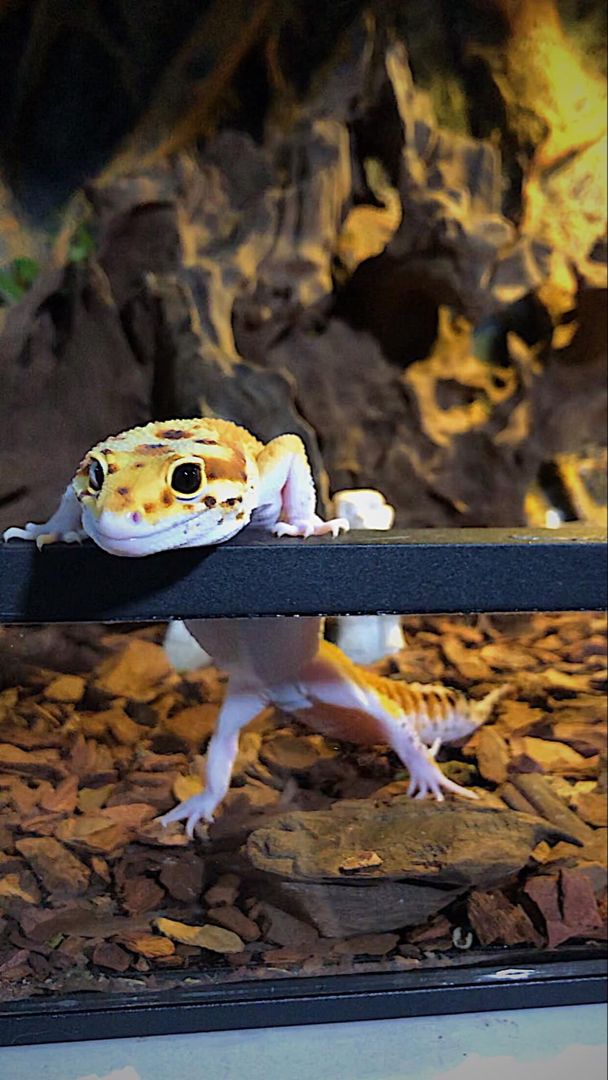 For babies and juveniles, choose a rather flat, shallow dish that is small in size.
For babies and juveniles, choose a rather flat, shallow dish that is small in size.
As your leopard gecko grows, you can change the dish to a bigger one. But the main thing is for your leopard gecko to see the water, otherwise it won’t be able to drink it.
Change the water at the end of the day (or at least 5 times a week) or whenever it becomes dirty with insects or feces. The best practice is to change the water at the end of the day.
Once a week, clean the water dish thoroughly by washing it with antibacterial soap. Twice a month, you should disinfect the dish by soaking it in a 5% bleach solution for half an hour.
If you have started noticing your leopard gecko gaining weight, cut back on the food your are offering. Your leopard gecko is becoming fat if its belly is too round and the tail becomes too wide. A plump belly will be touching the floor.
Leopard geckos lick food to get more information about it. With the tip of their tongue, leopard geckos can understand if the food is moving and taste it before eating.
You should weigh your leopard gecko once or twice a month and write it down in the book. If your leopard gecko has not been consistent with food, but hasn’t lost any weight, it should be fine.
Most female leopard geckos eat less and refuse food when ovulating and during the pregnancy (most often at the end). Your gecko might also eat less if nothing when shedding/molting.
Your leopard gecko is likely to eat less if it has become bored with the food that you are offering. Leopard geckos can be picky and stubborn eaters – start introducing new insects and try to mix it up. If your leopard gecko has lost weight, it can be infected with parasites – see your vet.
Feed your leopard gecko insects that are not bigger than the half of gecko’s head width. This will change with age, and you should measure your leopard gecko’s head width each month.
The length of crickets and other insects to feed will be around 1/4 for hatchlings and babies, 3/8 inches for juveniles (4 months and over) and 1/2 to 1 inch to adult leopard geckos (10-12 months old).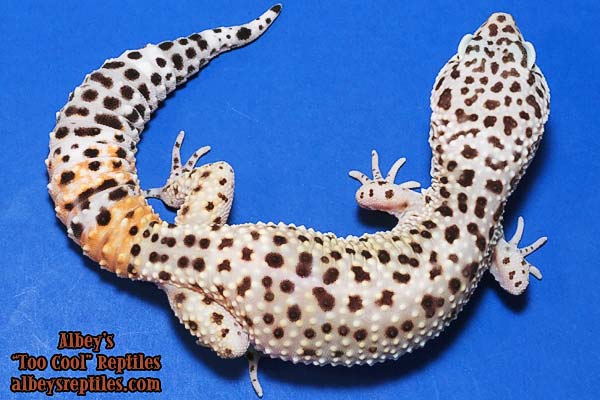
And now, let’s talk about the best choices of insects that you can feed to your leopard gecko.
Crickets for leopard geckos
Crickets are the most popular food choice for your leopard gecko. Don’t choose crickets that are too large, don’t place too many of them in a cage, and never leave them in gecko’s vivarium for more than a day.
The pros of crickets are that they are cheap, easy to get and care for. You can get crickets in big quantities and place them in a Cricket Pen like this where they will be while you are gut-loading them.
The cons of crickets are that they can get smelly and make sounds if you keep them for too long. Also, any uneaten crickets can hide under terrarium accessories and bite your gecko when they become hungry.
Remove any uneaten crickets after 20 minutes of feeding. You must gut-load and dust the crickets before feeding them to your leopard gecko.
There are different types of crickets: Acheta, black crickets, Banded crickets. Banded crickets have a higher protein content than other two types (around 20% vs. 15%).
Also, you must note the size of the crickets that you are feeding to your leopard gecko. Hatchlings and baby leopard geckos will not be able to eat large crickets. You must measure your leopard gecko’s head width – never offer a cricket that is too large.
Otherwise, it might cause choking and indigestion. To make it easier, there is a chart that tells you cricket numbers and their sizes. Your baby leopard gecko will most probably need 1/4 inch crickets, like these banded crickets like this.
You can also buy these gut-loaded and freeze dried crickets and break them into smaller pieces to feed your leopard gecko. Use freeze dried crickets only occasionally.
Cockroaches for your leopard gecko
Roaches also make an excellent food choice for your leopard gecko. Cockroaches have a high protein and a low fat content, making them ideal for frequent feeding. Some of the most popular options for roaches are following: Dubia roaches, Madagascar hissing roaches and discoid or Haitian roaches.
Cockroaches have a high protein and a low fat content, making them ideal for frequent feeding. Some of the most popular options for roaches are following: Dubia roaches, Madagascar hissing roaches and discoid or Haitian roaches.
One of the most famous roaches that you can buy live are Dubia roaches. Pros of Dubia roaches are that they are quiet and easy to keep – they will not be able to escape as they can’t climb.
When buying Dubia roaches, choose small sized ones that are 3/8 and smaller. Dubia roaches can get big and you won’t be able to feed them to your leopard gecko. Don’t forget to gut-load and dust them before offering to your leopard gecko.
Tomato hornworms for your leopard gecko
Hornworms are amazing for your leopard gecko. They are quite large, so you will need less of them to make a meal. Tomato hornworms are soft and can be easily digested. You need to gut-load them before feeding to you leopard gecko.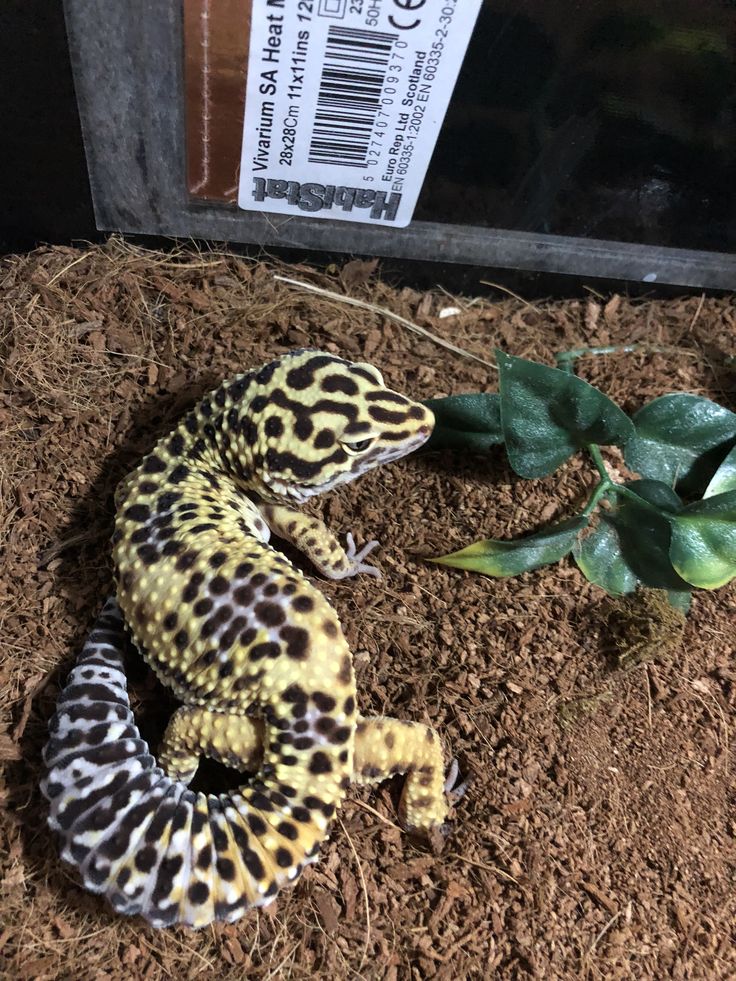
But the good news is, if you buy live hornworms like these, they will come in a cup habitat that has enough food for them.
Make sure to feed them to your adult leopard gecko only – and do it straight away after receiving them. Small tomato hornworms will be about 0.5 inches long, but they will quickly grow (in 2 weeks or so) and can reach 3-4 inches long. You can keep them in a fridge to slow down the growth.
Mealworms for your leopard gecko
Mealworms are very good for your leopard gecko and you can feed them regularly. Pick small 1/4 inch mealworms for your juvenile leopard gecko. With adult leopard geckos, you can offer larger mealworms, up to 1/2 inch. You can also choose freeze dried mealworms.
With freeze dried mealworms, make sure to move and wiggle them to activate leopard gecko’s feeding mechanism. You can also offer superworms or giant mealworms to your adult leopard gecko, as an occasional treat.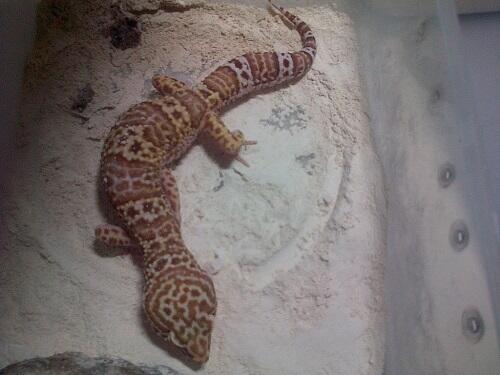
With live mealworms, keep them in a Kritter Keeper and gut-load them 24 hours before feeding to your leopard gecko. If feeding freeze dried mealworms, dust them with calcium supplement at every feeding.
Waxworms (moth larvae) for your leopard gecko
You can offer wax worms to your leopard gecko, but they should be considered a treat. Waxworms are high in fat (around 25%), so overfeeding will cause obesity. Pregnant and egg-laying leopard geckos will benefit from some extra waxworms. Offer to egg-laying females and adults once in a week or so.
Silkworms and Phoenix worms for your leopard gecko
Silkworms and Phoenix worms are all ideal for leopard gecko to eat. Phoenix worms are also called Black Soldier Fly Larvae. Dust all worms with calcium and other supplements.
Phoenix worms are quite high in calcium and phosphorus, so you might skip dusting them. Another advantage of Phoenix worms is that they are low in fat (around 6-10%) but have an excellent calcium to phosphorus ratio. You will probably need more Phoenix worms to make a meal, as they are quite small.
You will probably need more Phoenix worms to make a meal, as they are quite small.
Silkworms are caterpillars of silk moth – you can buy live and canned ones for your leopard gecko. But silkworms can be quite expensive compared to crickets, mealworms or Dubia roaches.
Earthworms for your leopard gecko
Earthworms can be also suitable. They are low in fat and contain good levels of calcium. Make sure Earthworms are clean and don’t contain dyes. Gut-load + dust and wash them before offering to your leopard gecko.
Pinkie mice for your leopard gecko
As mentioned above, you can feed your leopard gecko a mouse pup, also called a pinkie once in 2-3 weeks. These mouse pups are neonates (few days old) and should not have any fur on their bodies. They are fatty and you should only offer it to your gecko only for extra calcium intake and fattening. It can be better to skip feeding any mice to your leopard gecko if it is healthy and enjoying other foods.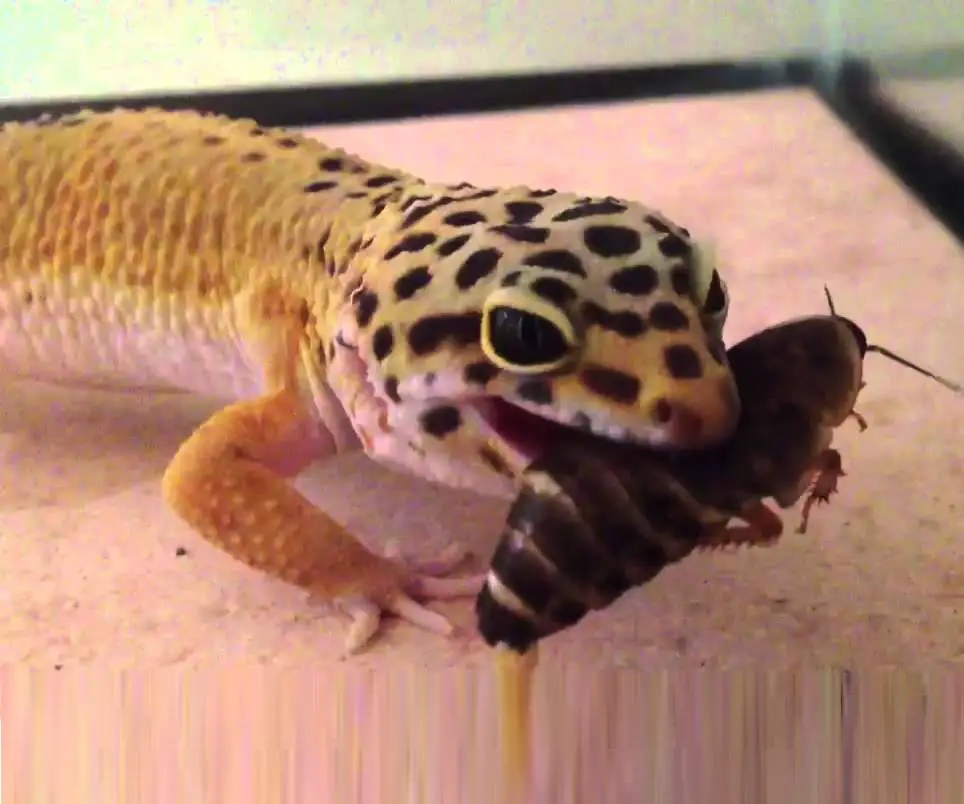
You will probably have to trigger the hunting behavior in gecko to make it eat a mouse. If you decide to try feeding a pinkie mouse to your leopard gecko for fattening, it is better to get frozen pinkies, and let it thaw before offering.
What food/insects must you not offer your leopard gecko?
Don’t offer insects that might be potentially poisonous. Also, don’t offer any insect that you have captured yourself. Few of the poisonous insects are lubber grasshoppers, lightning bugs/fireflies and other insects that glow in the dark. Bright insect coloration usually means that it is potentially poisonous.
Thank you for reading this post! You can also read what other foods leopard geckos can and cannot eat in this interesting post. Make sure to read a supplementation guide to learn more about leopard gecko’s diet.
Related posts:
How to feed a eublefar - feeding a gecko at home, keeping and caring for lizards
Geckos love tasty food.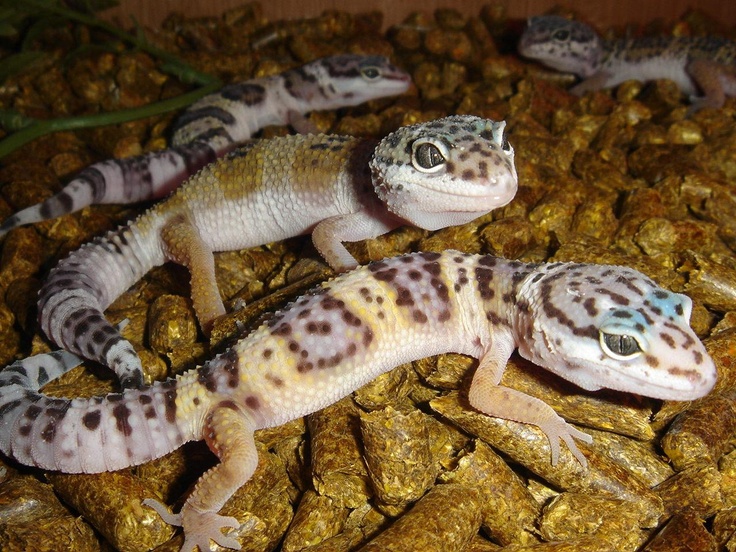 They quickly get used to treats and may refuse healthy and healthy food. To prevent this from happening, you need to include a variety of dishes on the menu and adhere to the feeding regimen. We tell you how to do it.
They quickly get used to treats and may refuse healthy and healthy food. To prevent this from happening, you need to include a variety of dishes on the menu and adhere to the feeding regimen. We tell you how to do it.
Feeding objects
Gecko food objects are divided into basic and additional. The main ones should be in the lizard's diet from birth. Additional food items include treats that can be added to the diet after the pet is six months old.
Geckos feed on insects and do not refuse newborn naked mice. It is advisable to give your pet live food so that the instinct of the hunter does not disappear. If you choose this option, then remember that you also need to take care of keeping insects at home. They must be full and active.
Another way is to feed frozen food. In this case, it is enough to store food in the freezer, and defrost it immediately before feeding. If the food has lain at room temperature for about 2 hours, it will have to be thrown away.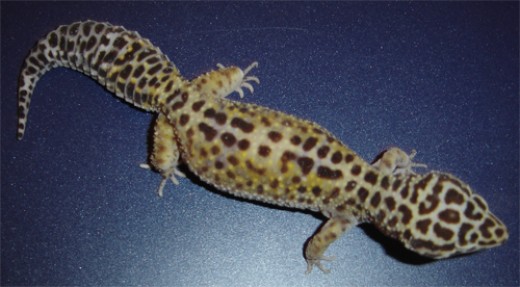 You can not freeze insects again.
You can not freeze insects again.
Menu
At home, the gecko should eat the same way as in the wild.
Diet
The main menu should include:
- crickets;
- cockroaches;
- locust;
- grasshoppers;
- earthworms;
- butterflies, moths, moths.
You don't have to choose just one. A mono-diet can lead to beriberi and metabolic disorders. If it is not possible to diversify the diet, use ready-made feed additives. They contain the components necessary for proper development.
Where can I get food?
Food and vitamins for reptiles can be ordered in the online store. To grow food yourself, get a separate terrarium for it. Do not feed hungry insects to your lizard, as they bite and can feed on your pet's feces, which will negatively affect his health.
We do not recommend getting food for the gecko on the street. Together with wild insects, chemicals, helminth eggs, poisons of larvae, etc. , can enter the body of reptiles.
, can enter the body of reptiles.
Which food should I choose?
Crickets and cockroaches are the main diet of the lizard. Their share is about 70%. The remaining 30% are treats. For example, spotted leopard geckos love tobacco hawk caterpillars, mealworms, silkworm larvae, etc. Periodically change treats to create conditions close to the wild.
40 g 319 ₽ 293 ₽ 40 g x 2 pcs0002 40 g x 24 pcs Show all offers Show all offers
Power Features
Feeding time depends on the type of lizard. Some are active at night, others during the day. For example, geckos hunt at dusk, at night and at dawn, so they prefer to eat early in the morning or late in the evening. By the same principle, feed currents, striped, viper geckos, etc.
Frequency
Geckos have a good appetite. In their natural habitat, they eat any prey that they manage to catch. Do not overfeed - reptiles have slow digestion. It is important that before the next feeding they have time to digest the previous portion. Young lizards need to be fed more often than adults.
It is important that before the next feeding they have time to digest the previous portion. Young lizards need to be fed more often than adults.
There are two approaches to feeding:
- 1 time in 3-4 days for 5-7 large insects. So the reptile will definitely not overeat, but will remain a little hungry.
- 1 time in 2-3 days, but until full saturation, until the pet refuses to eat.
Babies under 2 months old need daily meals.
How to understand that the gecko is full and happy? Rate his behavior. The pet must be nimble during the period of activity. After overeating, lizards become passive, they have problems with the liver, reproductive system. The state of the pet is easy to determine by the tail. In starving geckos, it is thin, in overeating geckos it is large and interferes with walking. With proper nutrition, the tail looks natural in relation to the body, as in the photo below.
Portion sizes
Portions depend on the age and size of the geckos.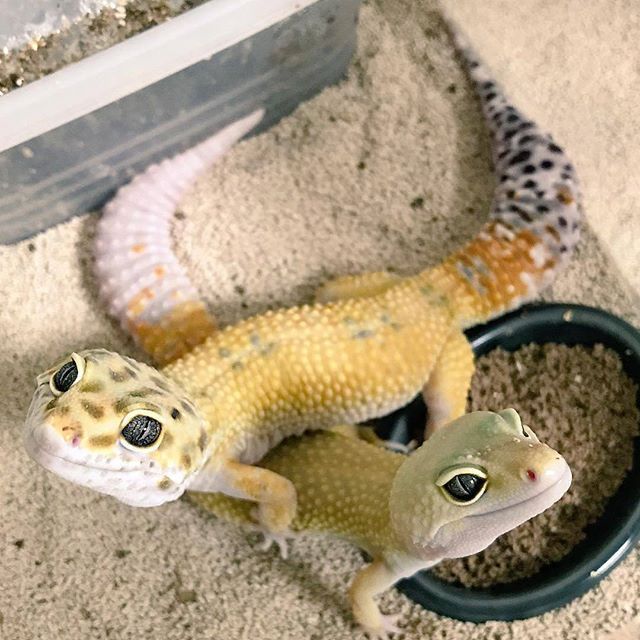 For a miniature adult animal, 2-3 large crickets are enough. A large lizard needs to eat 10-15 of the same insects. Newborn animals are fed from the 4th day of life 1-2 times a day with small crickets. After 12 months, the cubs switch to a common diet.
For a miniature adult animal, 2-3 large crickets are enough. A large lizard needs to eat 10-15 of the same insects. Newborn animals are fed from the 4th day of life 1-2 times a day with small crickets. After 12 months, the cubs switch to a common diet.
Choose the right food. Do not give the animal an insect that is too large for it, which is difficult to digest. We recommend that you follow a simple rule: the length of the insect should not be more than the distance between the eyes of the gecko.
Conditions
Lizards feel more alert if they can hunt. To create such conditions for them, purchase a terrarium with a tight-fitting lid. Then the crickets, cockroaches and moths will stay inside. But the gecko can live peacefully without hunting. Simply feed it defrosted insects with tweezers. The animal will be interested in such food.
What should not be fed to individuals?
Geckos should not be fed anything that they do not eat in nature. Vegetables, fruits, yoghurts, berries and similar foods are not suitable.
Vegetables, fruits, yoghurts, berries and similar foods are not suitable.
Reptiles are not given dead insects. The latter are densely fed and frozen alive. A hungry cricket or cockroach is useless for a lizard. For the same reason, moulting crickets should not be given to an animal - they are always empty. They are easily recognizable by their white color.
Insects that glow in the dark are not suitable for food. These are fireflies and lightning beetles. A chemical that is toxic to geckos is responsible for the glow.
What must be in the diet?
Mineral and vitamin supplements should not be excluded from the menu. The first contains calcium. The gecko is happy to use it in the quantities needed for growth and healthy molting. Pour the powder into a small bowl and place on the floor of the terrarium.
Vitamin supplements must be dosed. They are dry and liquid. Dry roll a few crickets 1-2 times a week. For pregnant females, slightly increase the portion.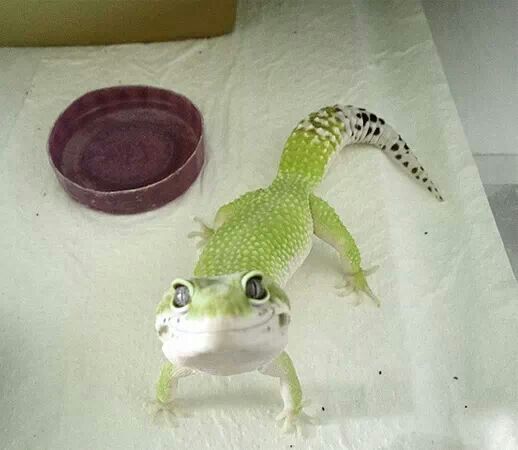 Liquid vitamin complexes can be applied to the eyes or the tip of the pet's nose. It is convenient to do this with a soft brush. The animal licks the drops.
Liquid vitamin complexes can be applied to the eyes or the tip of the pet's nose. It is convenient to do this with a soft brush. The animal licks the drops.
The gecko needs clean and fresh water. Place a small bowl at the bottom of the terrarium. Rinse and refill daily. Some individuals like to swim, especially in the heat. Many reptiles stomp in the bowl and then walk around on the mineral feed. Water can be sprayed on the walls of the terrarium. Your pet might enjoy licking the drops off the glass.
One pieceShow all offers Proper nutrition of a gecko depends not only on food, regime and conditions. Appetite is also influenced by external factors. The lizard needs to warm up well after eating. Only in this way the body will absorb the necessary nutrients. The terrarium should have a warm zone in which the soil will warm up to about + 34 ° C. Immediately after feeding, do not take the pet in your arms or stimulate activity. Feed your pet in a relaxed environment. Eliminate loud noises, bright lights, and anything that might scare the animal. Watch his behavior during feeding. This will help you in the care and training, if you want to accustom the animal to your hands. Nevada 1976 Leopard eublefar: care and maintenance at home 0 Comment Those who want to have an unusual pet at home, experts advise to pay attention to the leopard eublefar gecko. This lizard is suitable for both advanced reptile lovers and beginners. Caring for her is not difficult, and her character will not create problems: she is a peaceful and positive creature, easily attached to a person and able to show her love. The leopard gecko (Eublepharis macularius) was described by the English zoologist Edward Blyth in 1854. The insectivorous lizard is native to Pakistan, Iran and Afghanistan. Eublefar is a lizard with many spots or no spots at all, depending on the variant of this species. If several color variations of the leopard gecko with a typical pattern, as well as albinos, metel, mandarin and other popular varieties. Young geckos do not yet have spots, but they appear as they mature. Leopard geckos grow up to 20 cm long and weigh 150-220 grams. Care for lizards of any variety of this species requires the same. Leopard geckos live 5-7 years, and with good care up to 20 years. Males can be distinguished from females by the protrusion at the base of the tail. In the female, this is one long bulge; in the male it is divided into two parts. The head of animal is large, pointed, connected to the body by a short thick neck. At the end of the snout is a pair of nostrils. There are large shields on the chin. On the sides of the head, openings of the auditory canals are visible, covered with eardrums. The eyes of lizards are large, oval and protruding, which is characteristic of nocturnal animals. Pupils in the form of a slit with a straight edge, located vertically. Unlike many geckos, the spotted leopard gecko has movable eyelids and a thin nictitating membrane. There are eyelash-like outgrowths at the back of the upper eyelid. Mouth is voluminous, its corners are slightly turned up. For this, eublefar is often called the "smiling gecko." This "good mouth" is filled with 100 small teeth, which are designed to hold and chew prey for a short time. There are teeth on both jaws and are attached to the inside of the bone. This connection is fragile (pleurodont), so the teeth are alternately replaced with new ones every 3-4 months, while young growing teeth are next to the old ones. The body of Spotted Leopard Gecko is covered with soft to the touch but very durable leather. In nature, it protects the lizard from injury caused by grains of sand, sharp rocks, and dry clay. The body is thick and slightly flattened. Compared to the viviparous and agile lizard, the eublefar seems clumsy. He moves slowly, waddling from side to side. Tail reptile thick in the middle, pointed, decorated with 2-3 lilac rings. It serves as a storage of adipose tissue. Since spotted leopard geckos live in arid areas, they use this reserve in the dry season as a source of water and in times of famine as nutrients. Lizards can discard the entire tail or part of it. This happens especially often with young individuals. From fear, pain, or to protect themselves from persecution, they have a contraction of special muscles, which contribute to autotomy. Autotomy is the rejection by an animal of some limb or organ. In young lizards, the tail grows quickly, in old lizards the regeneration process is delayed for a long time. If in nature tail shedding occurs before wintering, then the animal is left without “strategic” reserves, it can get sick and even die. Usually geckos return to the place where they lost such a nutritious part of their body and eat it. Legs reptiles of medium length, cylindrical, with five widened rounded toes without suction pads. There are tubercles on the subdigital plates. All fingers of each paw are rounded, equipped with thin sharp claws that help the animal to climb vertical soft surfaces, such as branches and leaves. There are no teeth (sand skis) along the edges of the fingers, which are characteristic of lizards living in deserts. The axillaries of the forelegs of the spotted leopard gecko are transformed into deep skin pockets, their purpose has not yet been clarified. Young reptiles are yellowish or flesh colored with dark stripes on the body and a dark brown “cap” on the head. In mature animals, a pattern of brown spots is placed on a light gray or light yellow background, more saturated on the body. On the underside of the tail and head, the spots are less bright, and on the abdomen they are completely absent. The combination of numerous dark brown spots and light thin spaces between them creates a net pattern on the head. A light stripe, more or less free from spots, stretches along the spine. The belly of the leopard eublefar is pale pink, the sides are white. And here is how sense organs work lizards: Today, there are five main types of geckos: 50 liters is enough for one gecko or a pair. If you have purchased a young pair and plan to keep them together, it is better to grow them separately. Why? Males grow faster and are larger than females, especially when raised together. In nature, "leopards" mainly prey on insects, but sometimes they can profit from their own kind, only smaller relatives. The favorite food of spotted eublefars at home is crickets (brownies, bananas, two-spotted). The Turkmen cockroach (Shelfordella tartara) has also proven itself as a food object, since it is very soft and easily reproduces without requiring special conditions. Mealworm (Tenebrio molitor) can also be included in the diet of geckos. Before serving insects, it is advisable to feed them with various greens, and then sprinkle them with vitamins for reptiles or calcium powder (this is especially important for females during the breeding season). Some individuals will not refuse newborn mice, but it is often not worth giving them. Do not forget that the gecko is still an insectivorous reptile. Spotted geckos do not eat various fruits, berries and other vegetation. Feeding a leopard gecko is very exciting. It is advisable to present food to him from the hand or with tweezers: this way the reptile will receive its portion and not swallow stones when hunting, and you will be sure that there are no cockroaches that could escape and lead a wild life in your apartment in the terrarium. If you feed grasshoppers, crush the head before feeding large ones, as grasshoppers have strong jaws that can injure your pet. Eublefars older than a year are fed 2-3 times a week. For one feeding, an adult gecko can eat an average of 5 crickets. The diet of young people is different. Very small geckos under the age of 1 month are fed 1-2 times a day - 1 cricket per feeding is enough for them. Lizards from 1 to 3 months old are fed once a day - they give 2 crickets. At the age of 3 to 6 months, geckos are fed every other day - an average of 1-3 large crickets per feeding. Eublefaras are cold-blooded lizards and need warmth to digest their food. Bottom heating will be the best option for this. To do this, you can use a thermal cord, thermal mat or shoe dryers. The temperature in the heating area must not exceed 32 degrees. It can be adjusted using a thermometer and the thickness of the soil when installing heating devices. Heating is placed in the corner of the terrarium, "heating" from 25 to 33 percent of the bottom area, while achieving a temperature gradient in the lizard's dwelling. At room temperature not lower than 22 degrees, heating can be turned off at night. Babies up to three months heating needs constant . The lizard's dwelling should have several shelters in warm and cold corners. And the eublefar will already make the choice of a more comfortable place. And also, do not forget about the necessary area of the terrarium - a wet chamber, which should be located in a warm corner where the animal will molt. She will be discussed a little later. Inexpensive, practical and environmentally friendly shelters can be used , made from half a coconut, which have proven themselves well and are liked by zoublefar. And also it is not a problem to order decor or shelter from the master or do it yourself. As the soil in the dwelling of the eublefar, an embankment is made of large pebbles and stones, but not sea and river ones, since they are slippery for the pet's paws. To prevent the animal from accidentally swallowing the pebbles, their size must be appropriate. It is advisable not to use ordinary sand, otherwise the eublefar will have digestive problems if it is swallowed. Special carpets are very suitable for terrariums. It is safe, beautiful and convenient when cleaning the animal's home. Any soft doormat will also work fine. Babies should be kept exclusively on paper towels or napkins. Any low and small container will do. Eublefara lizards love to drink clean settled water , lapping it with their tongue like kittens. And also with pleasure they lick off droplets of fresh water and with daily spraying in the drinker there is no special need, although it will never be superfluous. The drinker can be designed to match the style of a terrarium or make the simplest of improvised items. Alkaline water is considered the most beneficial in its composition. Eublefar gecko is a twilight animal and therefore does not need lighting. A regular 25-40 watt incandescent mirror lamp is quite suitable for it to simulate solar heating. Although the best option is the lower heating with a thermal mat, thermal stone or thermal cord. Ultraviolet radiation is also a necessary element that ensures the synthesis of vitamin D 3 in an animal. For this, special ultraviolet lamps are used. Although, if you add the necessary vitamins and minerals to your pet's food and provide him with bottom heating, then he will not need a lamp emitting ultraviolet light. The fact is that the vitamin complex, combined with the correct thermal regime, provides the animal with vitamin D 3 to the fullest. It is important to know that albino geckos do not like bright light. Therefore, when using lamps, this circumstance must be taken into account and, if possible, consult with an appropriate specialist. Humidity in pet's home must not exceed 50 percent. To increase the humidity to the desired value, if the apartment is too hot, it is necessary to periodically spray the soil in one corner of the terrarium, especially in the absence of a humid chamber. The old skin of a domestic reptile must come off completely during molting and this process must be controlled, otherwise, under certain circumstances, the pet may stop hearing, be left without fingers, etc. Therefore, you need to know that adults molt within 1–2 months alone times, adolescents - 1 time in a two-week period. And this may not even be immediately noticeable, since the reptile eats the old skin after molting. Due to their rapid growth, babies shed much more often than their counterparts. If you can keep a male and females and have the space to breed them, you can get as many offspring as you have females. The main thing is to be able to attach this offspring. It is very difficult to visually determine the sex of leopard geckos younger than 3-4 months. In adults 6-9 months old, it is quite easy to determine the sex. Males are usually slightly bulkier and have a broader head and neck than females. The male also has a pair of bulges behind the anus at the base of the tail. If you are not sure what gender your lizard is, add another lizard to the terrarium. If both geckos wag their tails from side to side, most likely they want to throw themselves at each other, which means they are two males. It is recommended to take females for breeding who have reached a weight of at least 115 grams, but the larger the female, the better. The mating process of reptiles is tough and one might even think that the male attacks the female. It nibbles on her tail and then slowly moves up her body until it reaches her neck. The female spotted gecko lays one or two eggs at a time. To obtain predominantly females in the offspring, the incubation temperature should be 25-28C; for mixed offspring 29-32C; to obtain males 31-32.3C. Please note that the higher the incubation temperature, the more colorful the offspring will be, and the eggs will hatch faster. The incubation period is 46-60 days. Young lizards will not eat until their first molt. With proper care, reptiles rarely get sick, but there is a list of diseases that can occur in such lizards. Pay attention to the behavior and condition of your pet in order to determine the presence of the disease in time and visit the veterinarian. The most popular supplement for insectivorous reptiles is REPASHY Calcium Plus . It is a mixture of calcium, vitamins, proteins, fats, fiber and other important substances. When adding this complex, you can not use any other additives. REPASHY helps to increase the nutritional value of insects, and the reptile receives all the substances necessary for health. Leopard gecko must eat a supplement every day. It is necessary to put the insects in a bag, add the powder and shake everything well, and only then give food to the reptile. When purchasing a gecko, it is important to make sure that it is healthy. For this , you need to carefully examine it to check if it meets the following criteria: It is worth remembering that a gecko acquired young may later change its color. The average life expectancy of the spotted leopard gecko in captivity is 12-15 years, the maximum is 20-25 years. Under natural conditions, the life span of males is 8-10 years, constantly giving offspring of females - 2-3 years, single females - 5-8 years. Lizards have many enemies. They are hunted by many birds: storks, herons, buzzards, eagles, harriers, hawks, kestrels, secretaries, eagle owls, kites, owls, magpies, crows. No less terrible enemies are various snakes, many of which feed only on lizards. Mammals also feast on them: polecats, badgers, foxes, viverras, mongooses, hedgehogs, etc. Monitor lizards eat smaller lizards, including eublefars. Reptiles flee from attack or freeze motionless, hiding. The latter tactic is especially effective against snakes that hunt only moving prey. Important to know
Temperature rating
Peace after eating
 Reptiles digest and assimilate food at rest.
Reptiles digest and assimilate food at rest. Leopard eublefar: care and maintenance at home
Origin and description
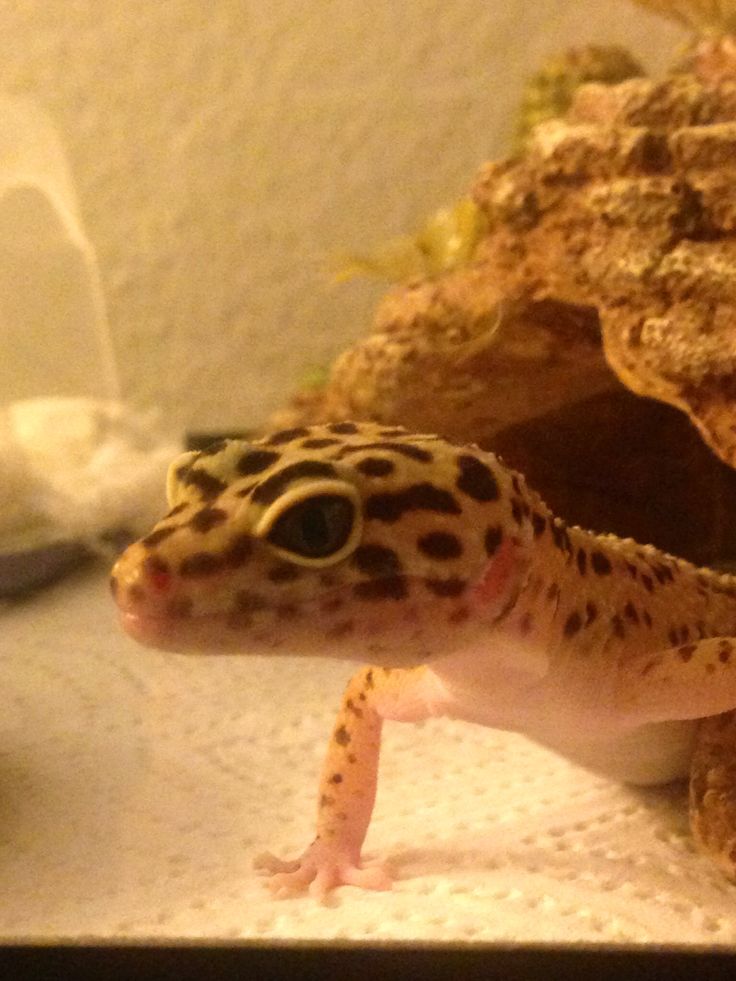 Lives in the desert, leads a nocturnal lifestyle. The leopard gecko is not listed as an endangered species.
Lives in the desert, leads a nocturnal lifestyle. The leopard gecko is not listed as an endangered species. 
 From above, the skin is covered with small scales, among which large cone-shaped scales stand out. These "warts" perform a thermoregulatory function. They contribute to the accumulation of heat and prevent its loss.
From above, the skin is covered with small scales, among which large cone-shaped scales stand out. These "warts" perform a thermoregulatory function. They contribute to the accumulation of heat and prevent its loss.
 The new tail will not be as long as it was before, but it will be thicker. It differs in color, the scales on it are smaller, and there are no tubercles.
The new tail will not be as long as it was before, but it will be thicker. It differs in color, the scales on it are smaller, and there are no tubercles.  On the cap in the eye area and near the top of the head there is a light pattern that looks like a bird's track. By 8 months of life, eublefaras become adults, and then their color changes.
On the cap in the eye area and near the top of the head there is a light pattern that looks like a bird's track. By 8 months of life, eublefaras become adults, and then their color changes.
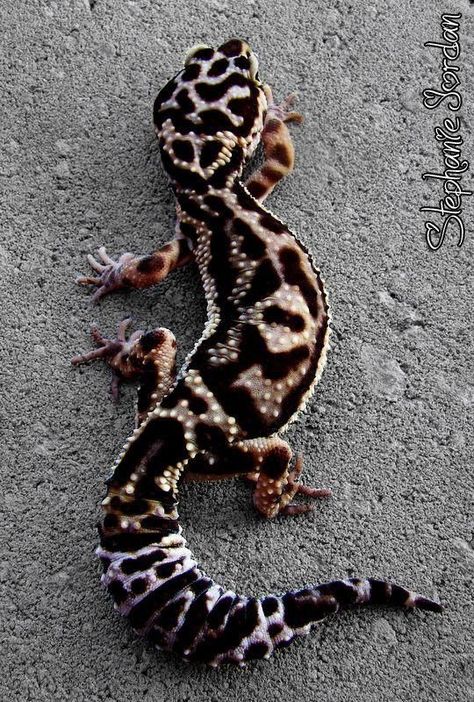
Varieties of geckos
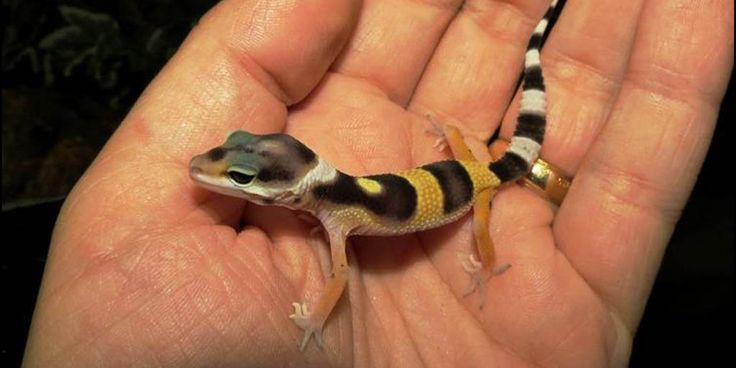 Lizards belonging to this species are the largest and have long legs.
Lizards belonging to this species are the largest and have long legs.
TERRARIUM KEEPING
 Of course, more volume will only be better, especially if you plan to breed them. You can not put a cover glass on the terrarium, since eublefars do not have the ability to climb on smooth surfaces, they do not have suction cups on their paws, like other types of geckos. However, if you have cats and dogs at home, then it is better to cover the terrarium, as they pose a serious danger to geckos. Well, do not forget that crickets and other insects can also escape from it, and you hardly need them in the house.
Of course, more volume will only be better, especially if you plan to breed them. You can not put a cover glass on the terrarium, since eublefars do not have the ability to climb on smooth surfaces, they do not have suction cups on their paws, like other types of geckos. However, if you have cats and dogs at home, then it is better to cover the terrarium, as they pose a serious danger to geckos. Well, do not forget that crickets and other insects can also escape from it, and you hardly need them in the house.
Several mature females will get along quite well (if they are about the same size), but males are pugnacious and will fight. A male and several females will also get along, but it is better not to keep them together until they have reached sexually mature sizes (about 45 grams for both male and female). 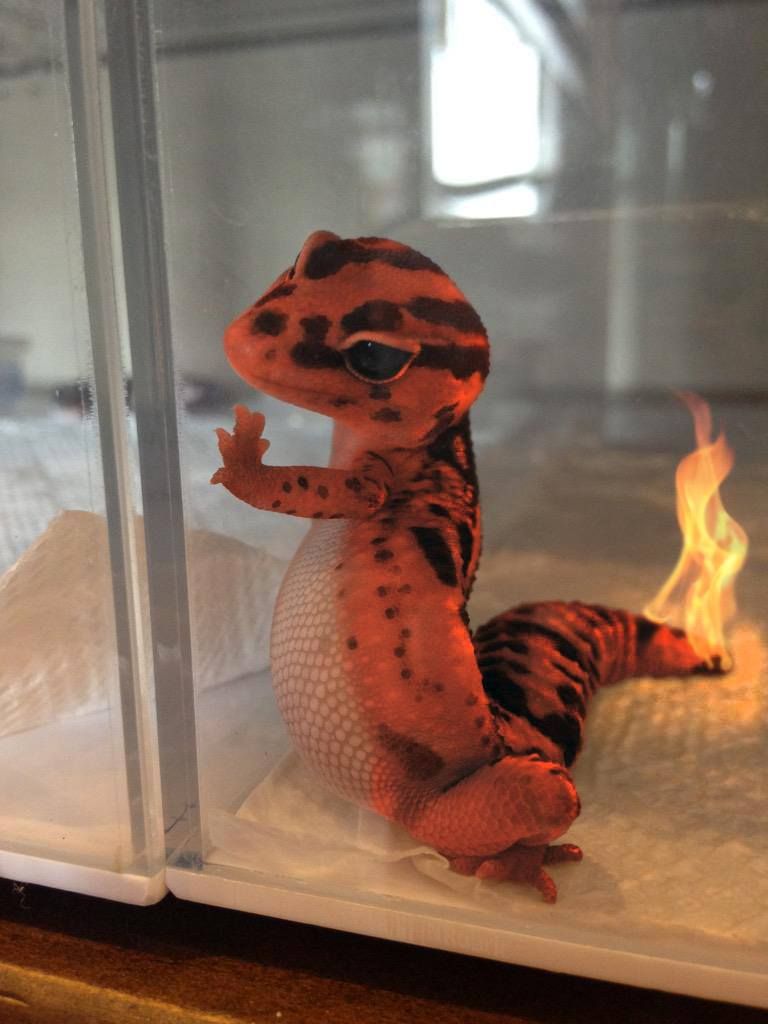 A larger male is more active and aggressive, he eats faster, often takes away food from the female, or simply terrorizes her. In addition, he becomes sexually mature earlier and begins mating games with a female, which is often not ready. Often, females weighing 25-30 grams lay eggs, but they are still too small. This shortens their lifespan, is stressful and reduces potential.
A larger male is more active and aggressive, he eats faster, often takes away food from the female, or simply terrorizes her. In addition, he becomes sexually mature earlier and begins mating games with a female, which is often not ready. Often, females weighing 25-30 grams lay eggs, but they are still too small. This shortens their lifespan, is stressful and reduces potential.
If you are raising several females together, remember that sometimes one of them grows faster and may take food from her companions. If the sizes are very different, then it is better to seat them in different terrariums. What to feed the spotted eublefar?
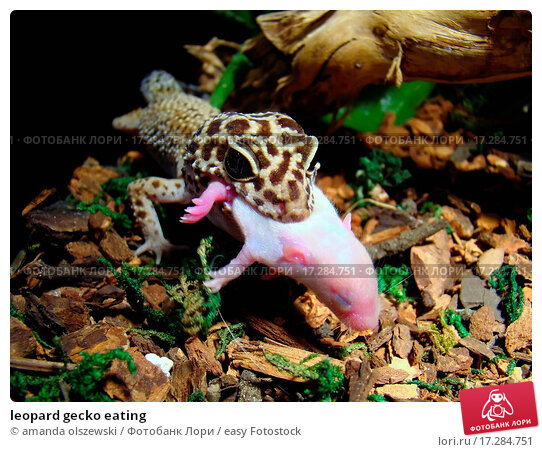 Eating it, eublefar even squints with pleasure. Not bad eaten marble (Nauphoeta cinerea) and larvae of Madagascar (Gromphadorhina portentosa) cockroaches.
Eating it, eublefar even squints with pleasure. Not bad eaten marble (Nauphoeta cinerea) and larvae of Madagascar (Gromphadorhina portentosa) cockroaches. 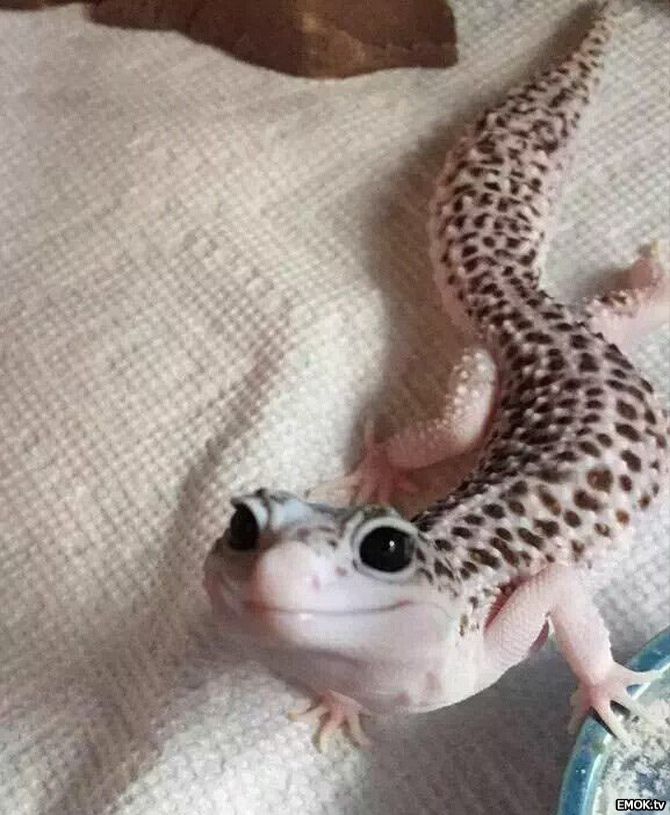 Moreover, eublefar will be happy to accept the proposed food in this form. In addition, hand-feeding will speed up the process of taming the animal. "Hunting" for food, the gecko stands on outstretched paws and briefly taps its tail. In the summer, various orthopterans (Orthoptera) from the grasshopper (Tettigoniidae) and grasshopper (Acrididae) families can be caught in the lizard meadow. This should be done away from agricultural fields and gardens, as insects can be poisoned by pesticides.
Moreover, eublefar will be happy to accept the proposed food in this form. In addition, hand-feeding will speed up the process of taming the animal. "Hunting" for food, the gecko stands on outstretched paws and briefly taps its tail. In the summer, various orthopterans (Orthoptera) from the grasshopper (Tettigoniidae) and grasshopper (Acrididae) families can be caught in the lizard meadow. This should be done away from agricultural fields and gardens, as insects can be poisoned by pesticides.  And for animals from six months to a year, it is enough to give food 2-3 times a week in the amount of 3-4 large crickets at a time. The terrarium must have a drinking bowl with water. It is good to use a Petri dish in this case, which has low edges. Water must be renewed at least every other day.
And for animals from six months to a year, it is enough to give food 2-3 times a week in the amount of 3-4 large crickets at a time. The terrarium must have a drinking bowl with water. It is good to use a Petri dish in this case, which has low edges. Water must be renewed at least every other day.
Heating 
Shelters
Soil 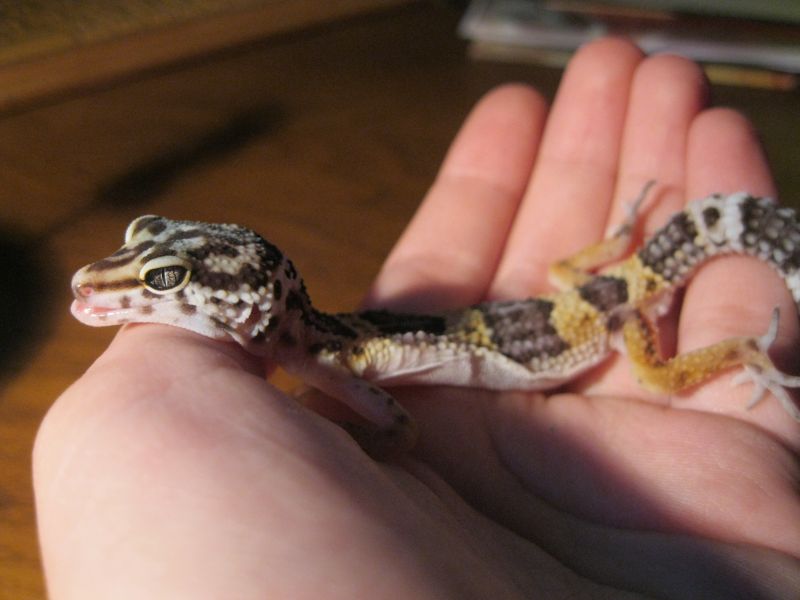
Water
Lighting 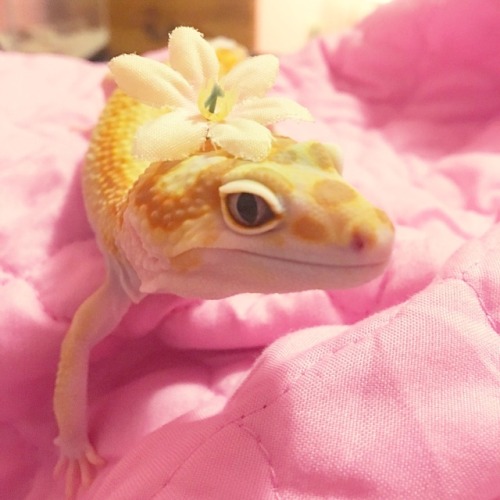
Humidity 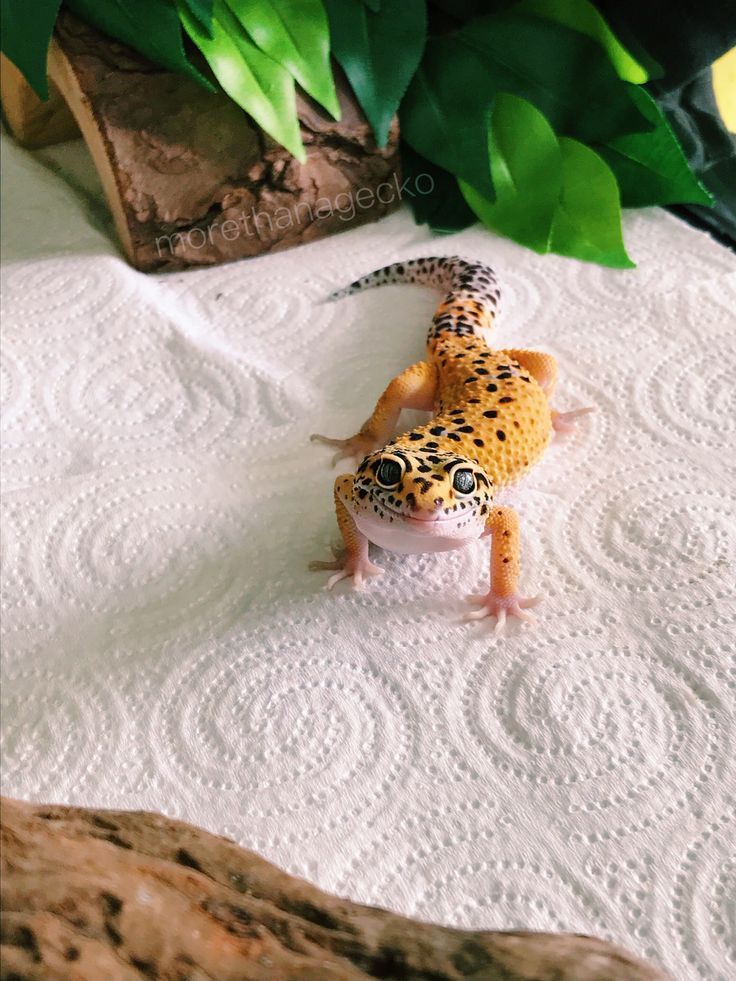
Breeding
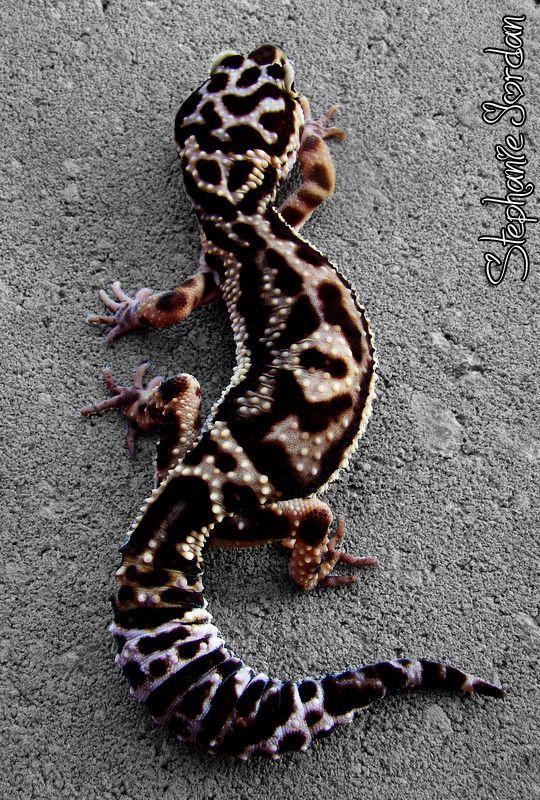 The female has no bulges.
The female has no bulges. 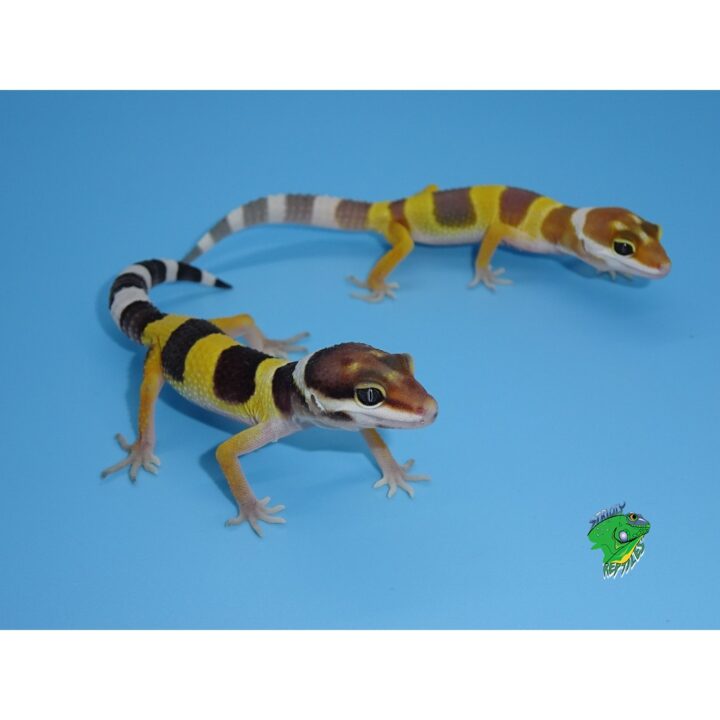 The gecko must eat the shed skin as it contains the vitamins and nutrients the lizard needs. After that, young monitor lizards begin to eat small, pinhead-sized crickets and small worms.
The gecko must eat the shed skin as it contains the vitamins and nutrients the lizard needs. After that, young monitor lizards begin to eat small, pinhead-sized crickets and small worms. Diseases of geckos
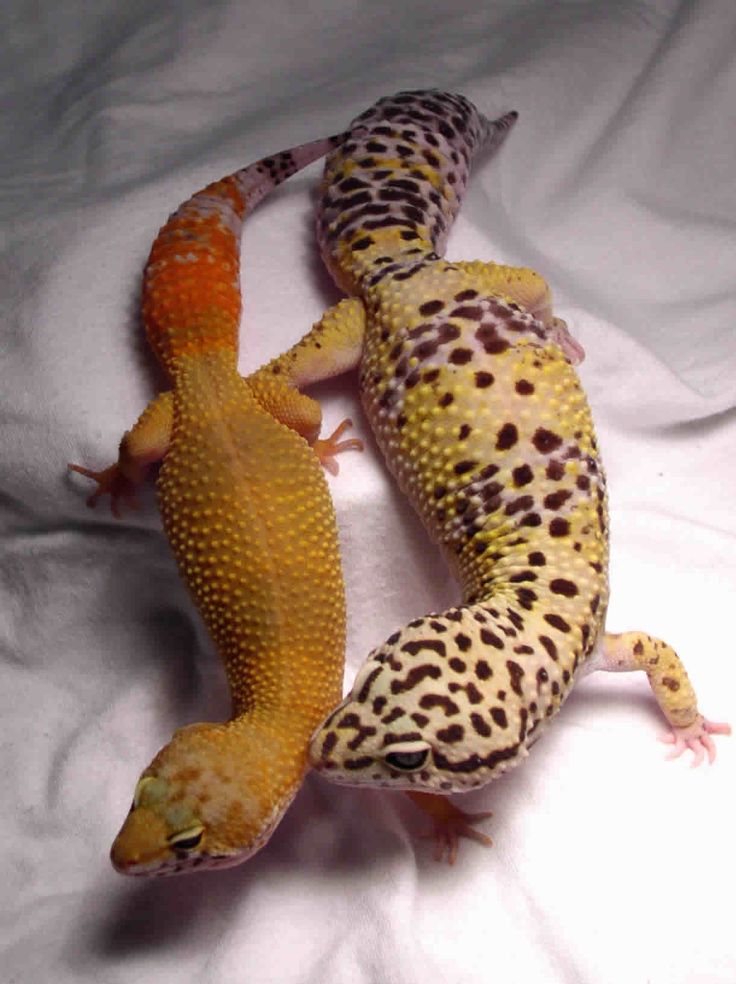
Gecko Vitamins
Purchase selection rules
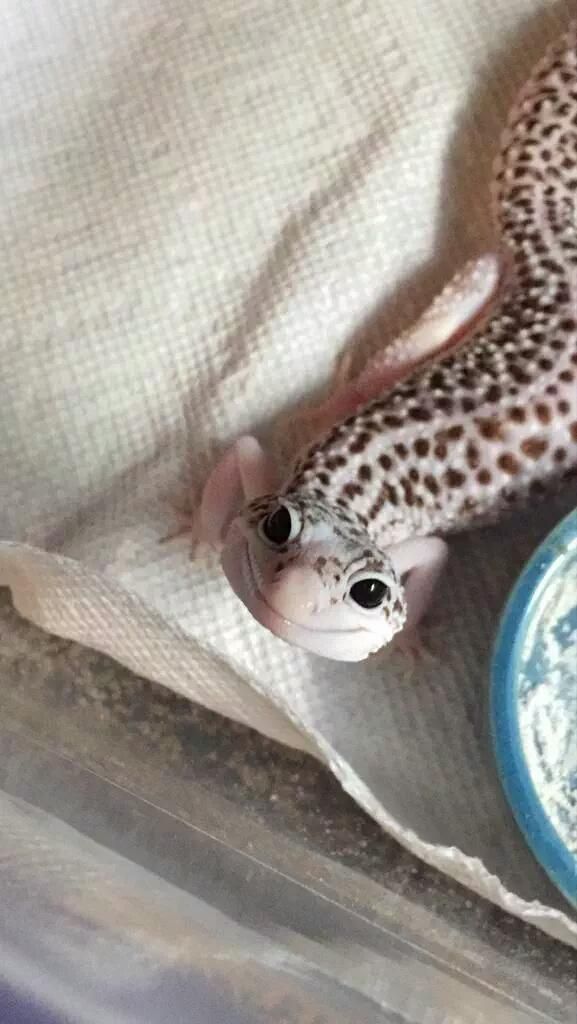 It is there that the lizard stores all the nutrients accumulated by the body. If the tail is not thick and long enough, this means that the animal's nutrition was poor, and the previous owner did not follow him well. This does not apply to small, newly hatched geckos that are actively growing.
It is there that the lizard stores all the nutrients accumulated by the body. If the tail is not thick and long enough, this means that the animal's nutrition was poor, and the previous owner did not follow him well. This does not apply to small, newly hatched geckos that are actively growing.  Therefore, if the appearance of the eublefar is important, it is better to buy an adult.
Therefore, if the appearance of the eublefar is important, it is better to buy an adult. How long does a spotted leopard gecko live?
Enemies of spotted eublefar in nature
